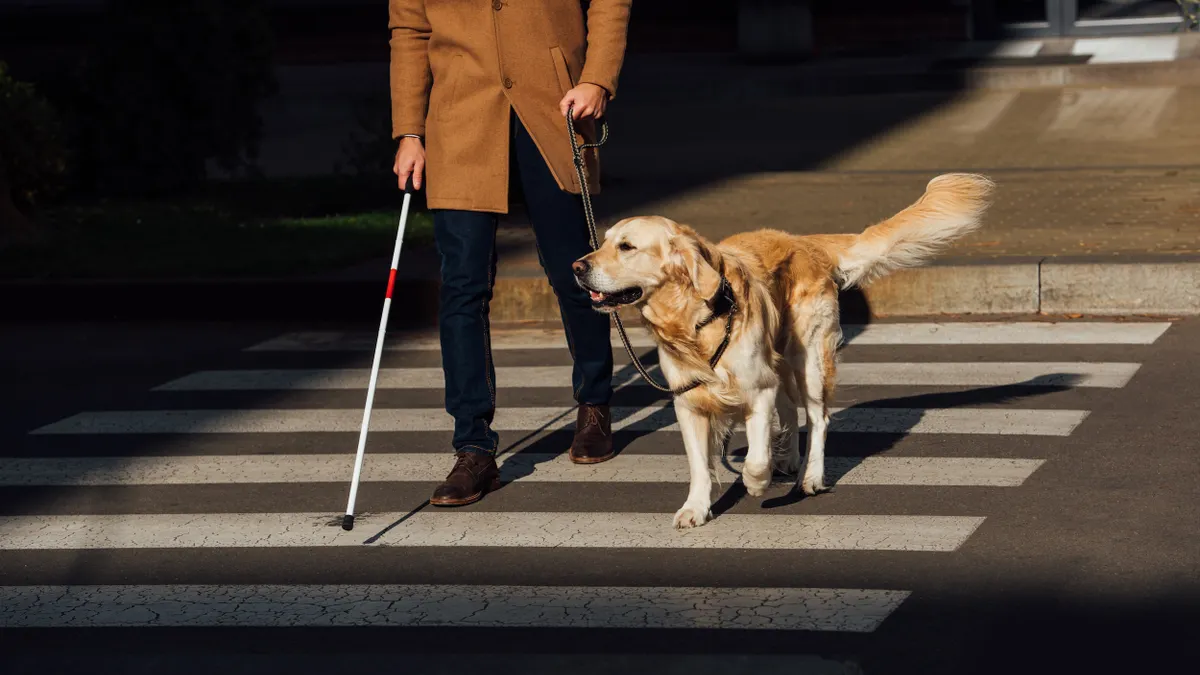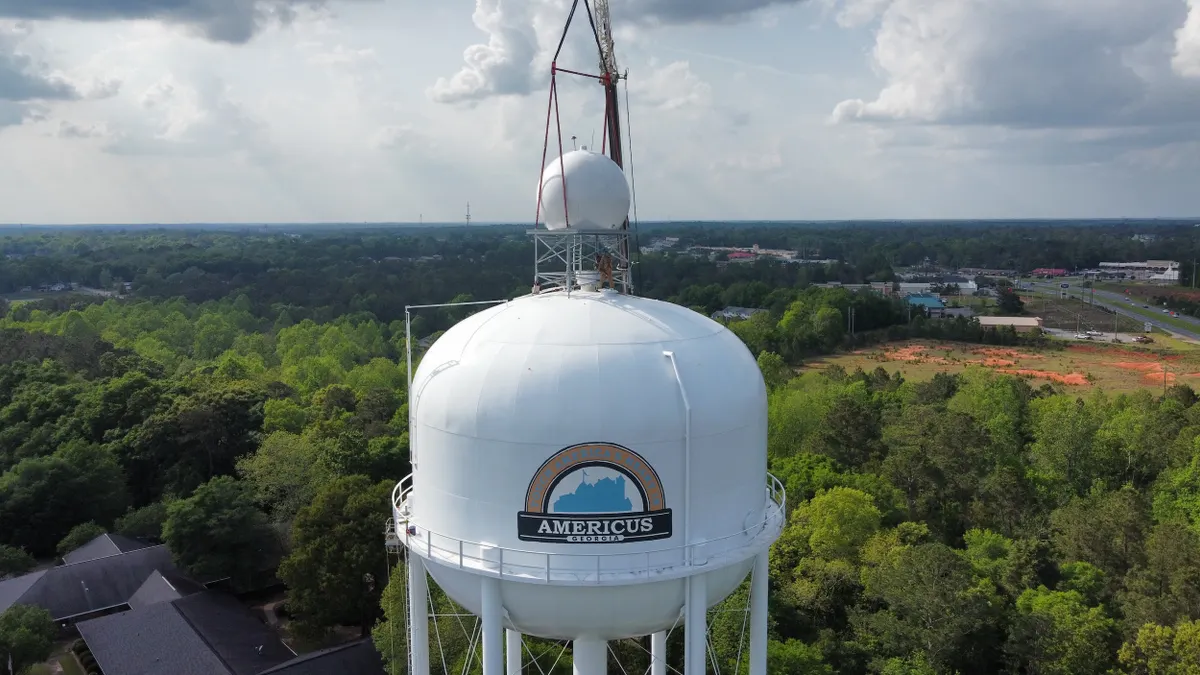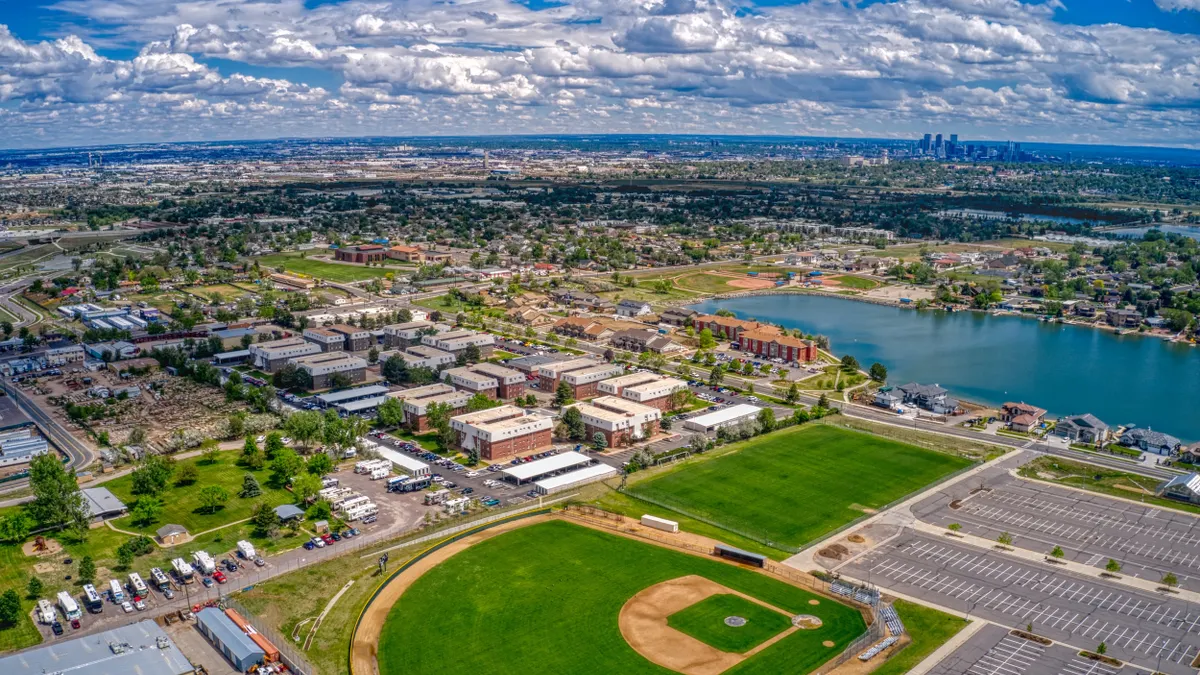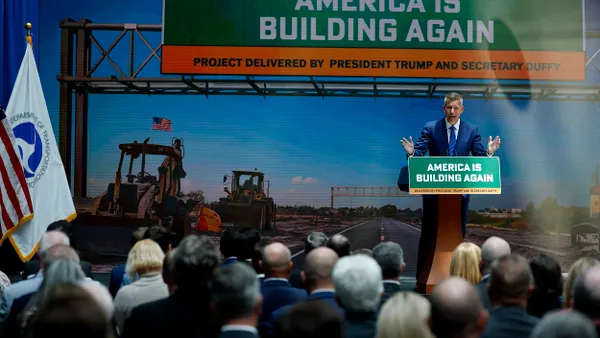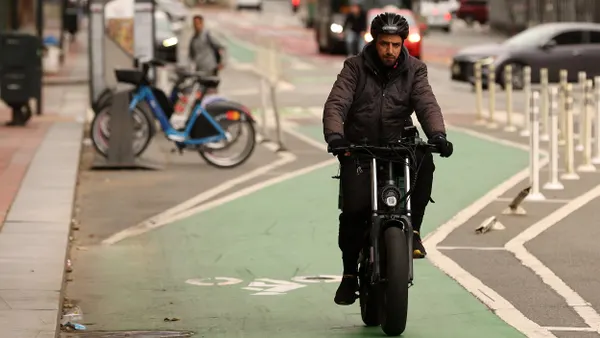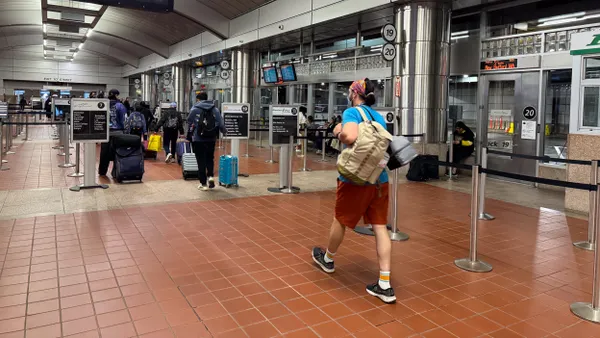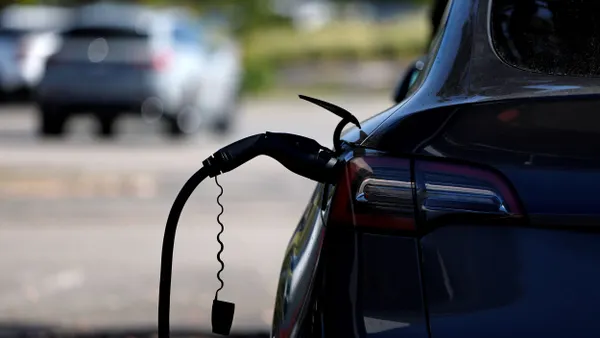Dive Brief:
- A federal court has ordered Chicago to install thousands of accessible pedestrian signals for blind and low-vision pedestrians — covering 71% of all signalized intersections throughout the city — over the course of a decade.
- Chicago must install accessible pedestrian signals at all remaining signalized intersections throughout the city by the end of 2040, according to the May 29 order from the U.S. District Court for the Northern District of Illinois, Eastern Division. A federal judge had ruled the city’s failure to install accessible signals at its signalized intersections violates federal civil rights laws, including Title II of the Americans with Disabilities Act.
- The court order will “completely transform” Chicago’s pedestrian grid for visually disabled pedestrians by giving them “access to that ‘walk’ or ‘don’t walk’ information that people who have vision already have,” said Madeleine Reichman, a senior staff attorney at Disability Rights Advocates, one of the groups that filed the class action lawsuit.
Dive Insight:
Accessible pedestrian signals alert blind or low-vision pedestrians when it's safe to walk across the street through audible and vibrating signals.
Many cities throughout the U.S. have not installed accessible signals, said Reichman, while some cities have installed them at only a small portion of their crosswalks or have older models in place that don’t work well.
In 2021, a federal court ruled that New York City’s lack of accessible signals violates the civil rights of people with disabilities and ordered the city to install them at 10,000 intersections over the course of a decade.
Last month, U.S. District Court Judge LaShonda Hunt followed suit by ruling Chicago needs to install the devices at its signalized intersections to be in compliance with the ADA and the Rehabilitation Act of 1973.
A separate class action lawsuit was filed against the District of Columbia in federal court on May 29. That suit argues the city installed accessible signals at only a fraction of its signalized intersections, and many of the devices have experienced maintenance and installation issues.
Disability Rights Advocates and Washington D.C.-based law firm Proskauer Rose filed the class action lawsuit against Chicago in 2019 on behalf of the American Council of the Blind of Metropolitan Chicago and three individual plaintiffs.
At the time, according to the nonprofit disability rights legal center, less than 1% of Chicago’s more than 2,800 signalized intersections provided APS for blind pedestrians.
Chicago has been installing APS devices at intersections over the past few years, but “the progress has been pretty slow,” said Reichman. Today, 3% of the city’s signalized intersections have APS, Disability Rights Advocates stated in a press release.
Under the court order, Chicago also must conduct routine inspections and maintenance of its APS devices and create centralized systems allowing city officials or members of the public to submit APS maintenance requests.
Over the next year, the city must install APS devices at at least 70 intersections — a yearly minimum rate that gradually increases each year, reaching a minimum 245 intersections during years eight, nine and 10.
The court is allowing Chicago to file a motion to stop installing APS by 2035 if the city can show that blind and low-vision pedestrians have “meaningful access” to the pedestrian grid. But “it is uncertain whether they would even try to argue that, and, if they do, how they would show that,” said Reichman.
“This will just level the playing field and make it so much safer for blind and low-vision pedestrians to just go about the city the same way that everyone else can,” she said.


